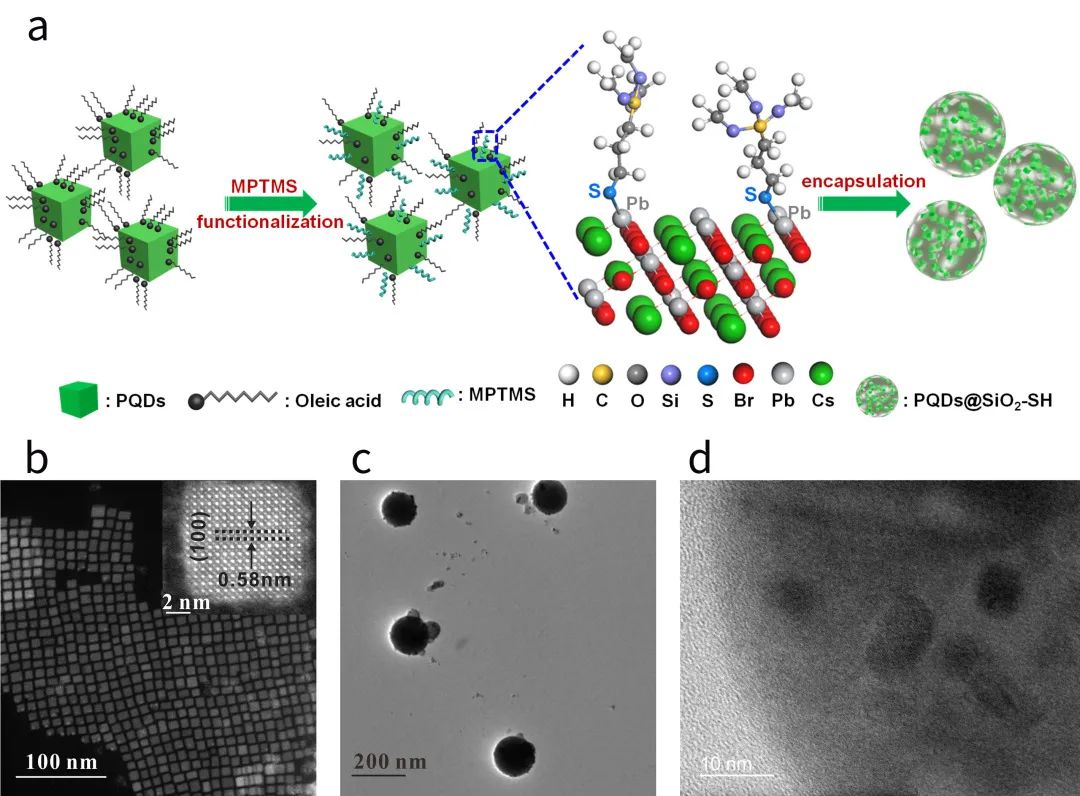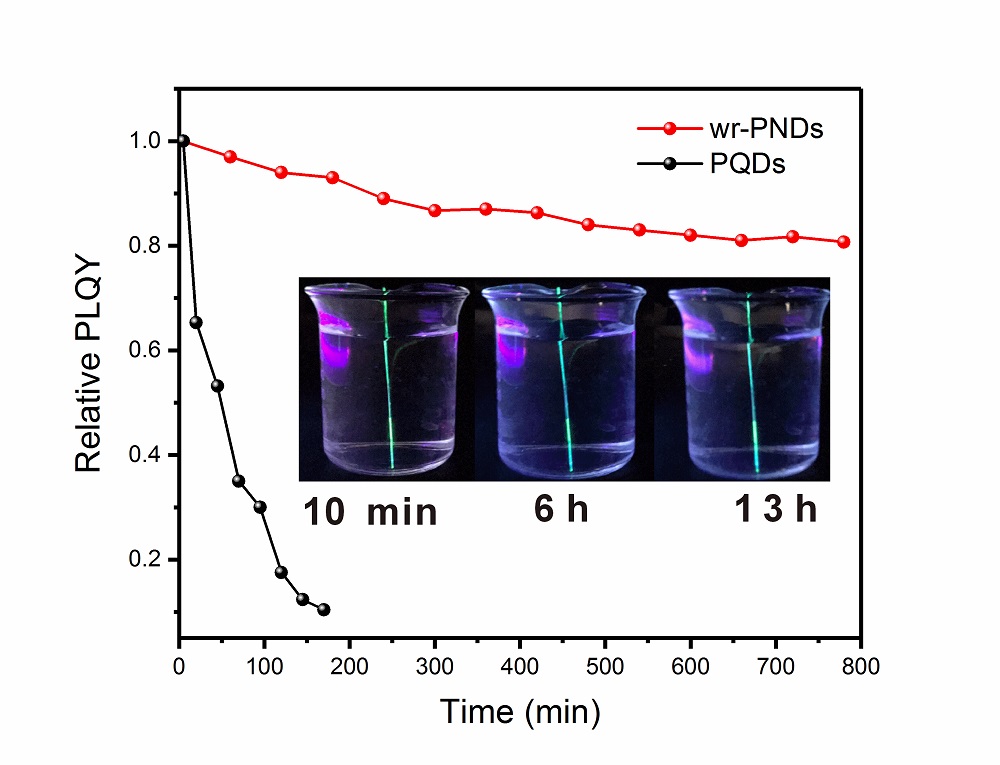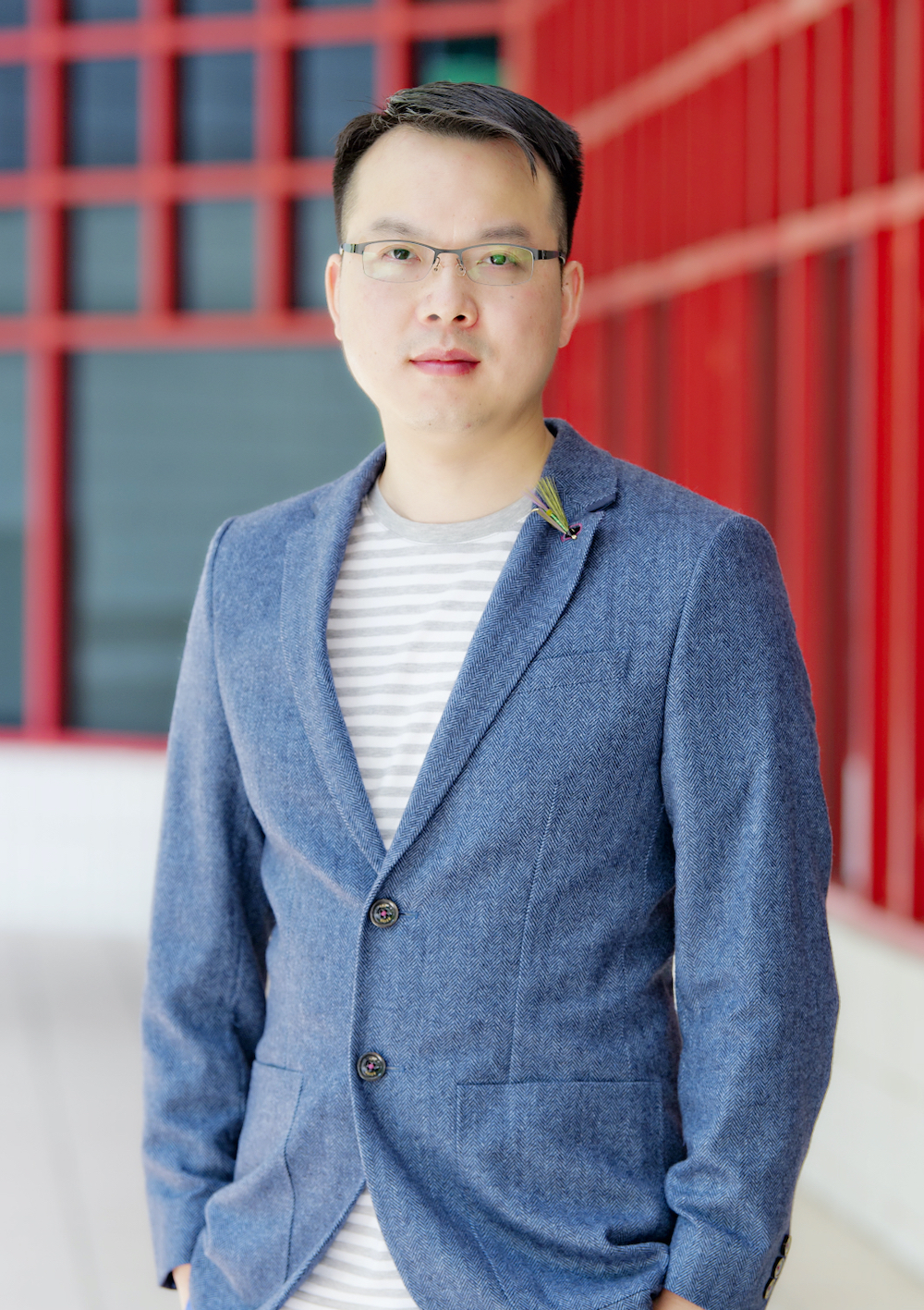Novel synthesis of water-resistant perovskite semiconductors
Lead halide perovskite semiconductors exhibit superb optoelectronic properties and have been broadly applied in research fields like solar cells, photoelectric sensors and laser devices. However, the weakness of easy degradation in water hinders the application of perovskite semiconductors. A research team led by scientists from City University of Hong Kong (CityU) has developed a novel synthesis method of perovskite materials to overcome this problem. Their findings help contribute to the perovskite’s applications in optoelectronics, bioimaging and biosensing.
Led by Dr Lei Dangyuan, Associate Professor from CityU’s Department of Materials Science and Engineering, the research team published their findings in the scientific journal Nature Communications, titled “Water-Resistant Perovskite Nanodots Enable Robust Two-Photon Lasing in Aqueous Environment”.
Encapsulating perovskite quantum dots in silica shell
Easy degradation of perovskite semiconductors in an aqueous environment significantly weakens its optoelectronic properties and hinders its development in device applications. “Perovskite semiconductors would lose their structural integrity even when exposed in the humid air. An increase in humidity would speed up the degradation,” explained Dr Lei.
To overcome this hurdle, Dr Lei’s research team developed a simple and effective Pb-S bonding approach to synthesise water-resistant perovskite nanodots. They encapsulated dozens of perovskite quantum dots (10 nm in diameter) in a silica shell to produce the water-resistant perovskite/silica nanodots with a diameter of around 170 nm. Not only water-resistant, but these nanodots also exhibited an excellent optical property and could emit strong green light in water for six weeks.

Their successful synthesis of tiny water-resistant perovskite nanodots with a diameter of around 170 nm is indeed a technological breakthrough. Dr Lei pointed out that a similar approach of encapsulating perovskite nanocrystals in a silica shell has been applied in other researches previously. Yet the diameter of the material synthesised was at least 500 nm. As this size is close to the excitation and operating wavelengths of many optical devices, therefore part of the light would be scattered and hence unfavourable for the integration of optical devices. Dr Lei and his team adjusted the chemical composition to synthesise the material and produced tiny perovskite nanodots with superior water resistance.
Tiny perovskite nanodots applicable in integration of optical devices
Dr Lei explained that because the diameter of their nanodots is only around 170 nm, which is much smaller than the near-infrared wavelengths. As a result, these nanodots could be used as the gain medium (a medium which can amplify the power of light) in the optical microcavity of laser devices.
Also, the structure of the encapsulated perovskite remained unchanged, with excellent optical properties. The team discovered that for the untreated perovskite quantum dots, their photoluminescence intensity (the intensity of light emission from a material after it absorbs photons) almost dropped to zero once being put in water. But for the silica-encapsulated perovskite nanodots, their photoluminescence intensity maintained at 50% even being put in water for more than 20 days.
Water-resistant and excellent optical property proved

To test the water-resistance of the perovskite nanodots, the team added them in a two-photon-pumped whispering-gallery mode laser device. The device retained 80% of its initial photoluminescence quantum yield (PLQY) when immersed in water for 13 hours. In contrast, the PLQY of the device added with untreated perovskite quantum dots decreased to less than 10% after 3 hours in water.
Moreover, the two-photon-pumped random laser device they fabricated based on the water-resistant perovskite nanodots could still operate in water for up to 15 days. “Experimental results have proven that the perovskite nanodots synthesised by our novel method are water-proof with outstanding optical properties,” concluded Dr Lei.
Water-resistance property extends the potential in bioimaging application
It took the team more than two years to finish this research. Dr Lei believed that their findings would facilitate the development in the commercialisation of laser devices based on perovskite quantum dots, and widen multidisciplinary research on the application of perovskite materials in fields like bioimaging as well as biosensing.
His team will collaborate with experts in biomedical engineering on the application of perovskite nanodots in bioimaging. “Previously, as perovskite materials are unstable in a humid environment, it cannot be used in aqueous cells as bioimaging probes. However, with our breakthrough, perovskite nanodots are now water-resistant. We are exploring how to use these materials in an aqueous environment. For example, if we put the perovskite nanodots into living cells and then apply femtosecond laser of 800 nm, we can perform deep-tissue bioimaging with suitable equipment,” said Dr Lei.

Dr Lei is the corresponding author of the paper. The first author is Li Siqi, his former PhD student and current Postdoctoral Fellow. Other CityU research team members are Professor Alex Jen Kwan-yue, Provost and Chair Professor of Chemistry and Materials Science, together with Professor Andrey Rogach, Chair Professor of Photonic Materials and Founding Director of the Centre for Functional Photonics, and PhD student Wu Shengfan. Professor Manish Chhowalla from University of Cambridge and Dr Zhu Ye from The Hong Kong Polytechnic University are also part of the team.
The funding support for the study included CityU, the Research Grants Council of Hong Kong, The Hong Kong Polytechnic University and the Croucher Foundation.
DOI number: 10.1038/s41467-020-15016-2